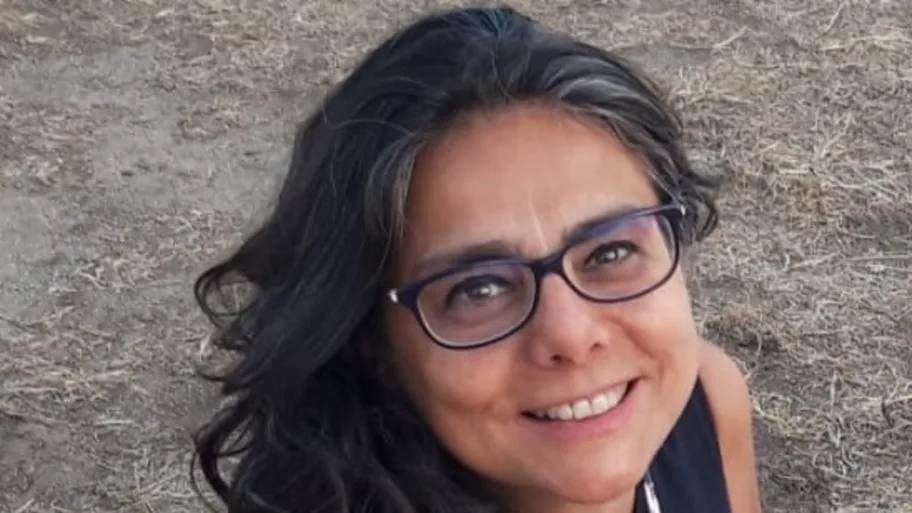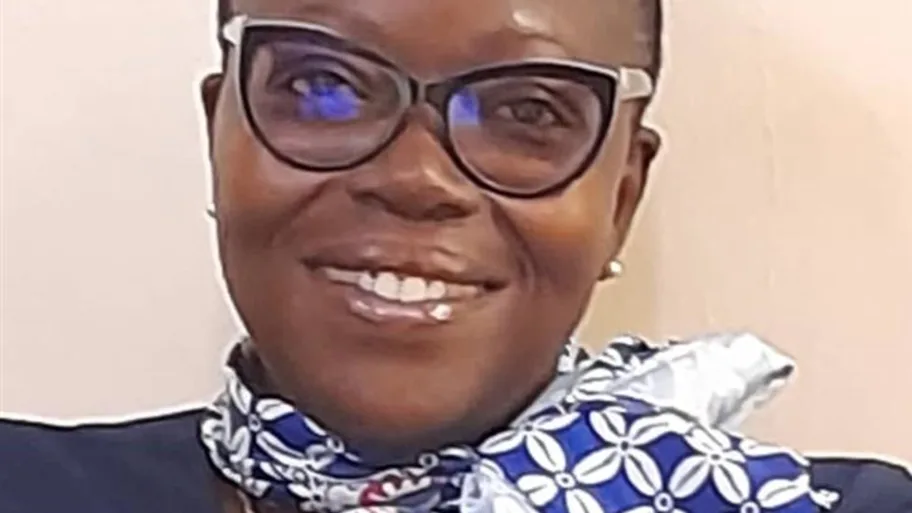
- Science news
- Frontiers news
- Cristina Chaminade — What does regenerative sustainability look like in the Global South?
Cristina Chaminade — What does regenerative sustainability look like in the Global South?
Author: Kate Brown
Dr Cristina Chaminade is a research professor at the Institute for the Management and Innovation of Knowledge (INGENIO (CSIC-UPV)), a joint research center of the Spanish National Research Council (CSIC) and the Universitat Politècnica de València (UPV). She is also an expert in regenerative innovations and sustainability transformations, particularly in developing regions.
With a background combining economics and conservation, she is a fitting interviewee for this month’s Women in Science blog to mark International Day of Science, Technology, and Innovation for the South. As science and technology progress, the Global South faces both new challenges and opportunities. This international day of observation intends to reaffirm the United Nations’ commitment to “leaving no one behind,” and highlights how advancing science, technology, and innovation not only helps to achieve the UN’s Sustainable Development Goals, but also promotes a more inclusive world.
Below is a summary of the discussion between Cristina and I, covering her work in this realm and her thoughts on promoting science, technology, and innovation in the Global South.

“I examine how science, technology, and innovation can support transitions toward sustainability and regenerative futures, in contexts such as coastal and rural regions around the world,” Cristina explains.
Her current research questions revolve around the directionality, geographical scale, and speed of those transitions. She is involved in several projects across countries in the Global South, including:
A project on the nexus between water biodiversity and climate change in rural communities in Colombia (2023-2027) funded by the Swedish research council for sustainable development, FORMAS
An analysis of trajectories for scaling innovations in conservation for Unearthodox
Three separate projects dealing with blue transformations in Small Island Developing States (SIDS), Central America, and the Balearic Islands.
The issue of scaling conservation innovation
Focusing on the topic of scaling conservation innovation, we explored the significance of the global biodiversity loss crisis.
“Nature conservation is facing a paradox. The world spends around $121 billion dollars on conservation, and while recent evidence shows that these efforts do make a difference locally, global biodiversity loss continues at alarming rates. According to the World Wildlife Fund (WWF), since 1970, we have lost 73% of species worldwide, with some regions like Latin America reaching 95%,” she recounts. “As international goals have been repeatedly missed, it is now crucial to look at why local success does not lead to transformative change.”
As a consultant with Unearthodox, Cristina examined how conservation innovations – such as new tools for ecosystem monitoring, community-based restoration models, or regenerative business models – can trigger system change. “We were particularly interested in the role of accelerators and incubators in supporting different forms of scaling. While incubation and acceleration mechanisms are well studied in business, their potential for conservation had not yet been studied. By analyzing how they shape networks, funding, and learning processes, we investigated whether they could help bridge the gap between innovative local initiatives and broader systemic change.”
The results showed that certain forms of scaling were almost entirely overlooked by the very organizations that can enable innovation. Cristina noted that the issue of scale in nature conservation is particularly timely, with the upcoming International Union for Conservation of Nature (IUCN) World Congress featuring an opening panel dedicated to this topic.

The balance between development, innovation, and conservation
Striking the right balance between development, innovation, and environmental conservation can be a delicate task. One concept of sustainable transformation that reflects this complex interplay, and a topic Cristina is passionate about, is “blue transformation,” or “blue economies.”
Cristina explains that the term “blue economy” originally referred to the sustainable use of ocean and coastal resources for economic development, while ensuring ecosystem health and social inclusion. “Over time, it has been applied to any economic activity based in the ocean, even if it is not sustainable, such as deep mining or trawling. This is why many researchers opt to talk about ‘just and sustainable blue economies,’ or even ‘regenerative blue economies,’ to restore the focus to justice and sustainability,” she continues.
A regenerative blue economy is one that is based on the protection, restoration, resilience, and regeneration of marine and coastal ecosystems, while prioritizing justice, equity, wellbeing, and resilience of affected populations. This regenerative lens can be applied more broadly to conservation science, technology, and innovation in the Global South; emphasizing inclusive, participatory governance systems and prioritizing activities that contribute positively to natural and socioecological regeneration.
“The ocean plays a central role in regulating the climate, supporting biodiversity, and sustaining millions of people in the Global South. Blue transformations offer pathways for aligning innovation and governance with long-term ecological, social, and environmental sustainability.”
Significance of the International Day of Science, Technology, and Innovation in the Global South
Our conversation moves to the upcoming UN observation day. Cristina reiterates how this day brings attention to the unique challenges, opportunities, and capacities within the Global South. “Some of the most profound sustainability transformations are happening in the [Global] South - through regenerative agriculture, community-based water governance, or conservation innovations. At the same time, these regions face challenges like fragmentation of their innovation systems, structural asymmetries in funding, limited human and organizational capabilities.”
Cristina notes that scientific knowledge is not the only driver of sustainability transformations – traditional knowledge and ways of knowing are equally important. This can often be seen in regenerative agriculture, for example. Other transitions, such as energy or mobility, are more heavily dependent on scientific and technological advancements, but still require a foundation of social and institutional innovation. “This may be a reason why very interesting, deep sustainability transformations are happening in the Global South,” she adds.
A global effort and innovation models in the South
Having established that different needs and capacities across the Global South create both challenges and opportunities, it raises the question of what can be done by those living in these regions, and those further afield?
In Cristina’s opinion, emerging economies can act as leaders and testbeds for sustainability-oriented innovation. “Many already experiment with regenerative solutions on land and in the ocean, including bio- and circular economies, renewable energies, sustainable mobility, often under conditions of scarcity and high vulnerability.” She believes it's important that the rest of the world learns from these innovation models.
Transformation in the Global South requires urgent shifts in science-policy-society frameworks, along with sustained investment in long-term innovation. Crucially, innovation frameworks must support both economic development and ecological regeneration. “It is paramount to eliminate the barriers for scaling regenerative innovations in the Global South, including those related to trade and global value chains of natural products,” Cristina says.
For those outside of the Global South, Cristina stresses the need to level the playing field. She advocates for equitable funding mechanisms, not only as a matter of fairness, but as a necessity for global nature conservation and environmental health. “International organizations can play a crucial role by connecting place-based innovations to global networks, fostering knowledge exchange, and supporting capacity-building.”
This applies equally to South-South partnerships.
Looking to the future and regenerative agendas
When asked about the future of promoting science, technology, and innovation in the Global South, Cristina highlights several key priorities: “strengthening transdisciplinary and participatory research methods, valuing Indigenous and local knowledge alongside scientific expertise, investing in the next generation of researchers, and moving towards scientific governance models based on participatory approaches and co-creation with society.”
South-led research agendas should be supported by global partnerships grounded in “reciprocity, co-creation, trust, and mutual learning,” she continues, clarifying that, “scientific partnerships should not reproduce traditional colonialist scientific approaches, based on knowledge extractivism and imposition of technical or scientific solutions developed in the Global North.”
To conclude, Cristina calls for aligning innovation with regenerative agendas. Reflecting on her 2020 research article, “Innovation for What? Unpacking the Role of Innovation for Weak and Strong Sustainability,” she underscores the urgency of questioning the direction of innovation:
“The question [posed in my article] is more burning now than ever. I would like to encourage researchers to focus their efforts [on] investigating what kind of innovations can help us to transit to a just, carbon- and nature-positive future that addresses both the climate and biodiversity crises. What knowledge is needed? How can those innovations be scaled? This is paramount, not only for the scientific community, but to the world as a whole.”
Frontiers is a signatory of the United Nations Publishers Compact. This interview has been published in support of United Nations Sustainability Development Goal 5: Achieve gender equality and empower all women and girls and United Nations Sustainable Development Goal 7: Ensure access to affordable, reliable, sustainable and modern energy for all.






